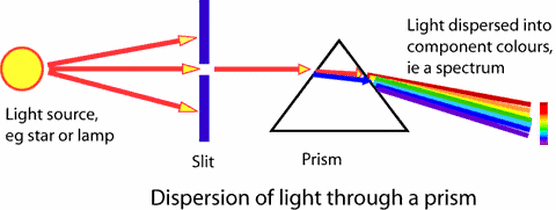"The velocity of light in a medium depends upon its index of refraction which in turn depends upon the wavelengths of the light, a process known as dispersion. In 1922 the English theoretical physicist Charles G. Darwin ( 1887- 1962) attempted to explain dispersion, unsuccessfully,on the basis of quantum theory. Raman and his associate K.S. Krishnan made their discovery while searching for an optical analogue of the Compton effect. Raman noted that in 1922 he and his student Rao had observed the depolarization of water as a function of wavelength, which changed for example,by 13.2,10.2, 11.5, 15.3 and 21.7 percent for red, yellow, green, blue and violet light."
Analysis of light scattered by a liquid is not an easy task, and much of the early work by Raman and his associates was done by the visual observation of color rather than precise measurements of the light's wavelength as shown in Figure 1.
Analysis of light scattered by a liquid is not an easy task, and much of the early work by Raman and his associates was done by the visual observation of color rather than precise measurements of the light's wavelength as shown in Figure 1.
